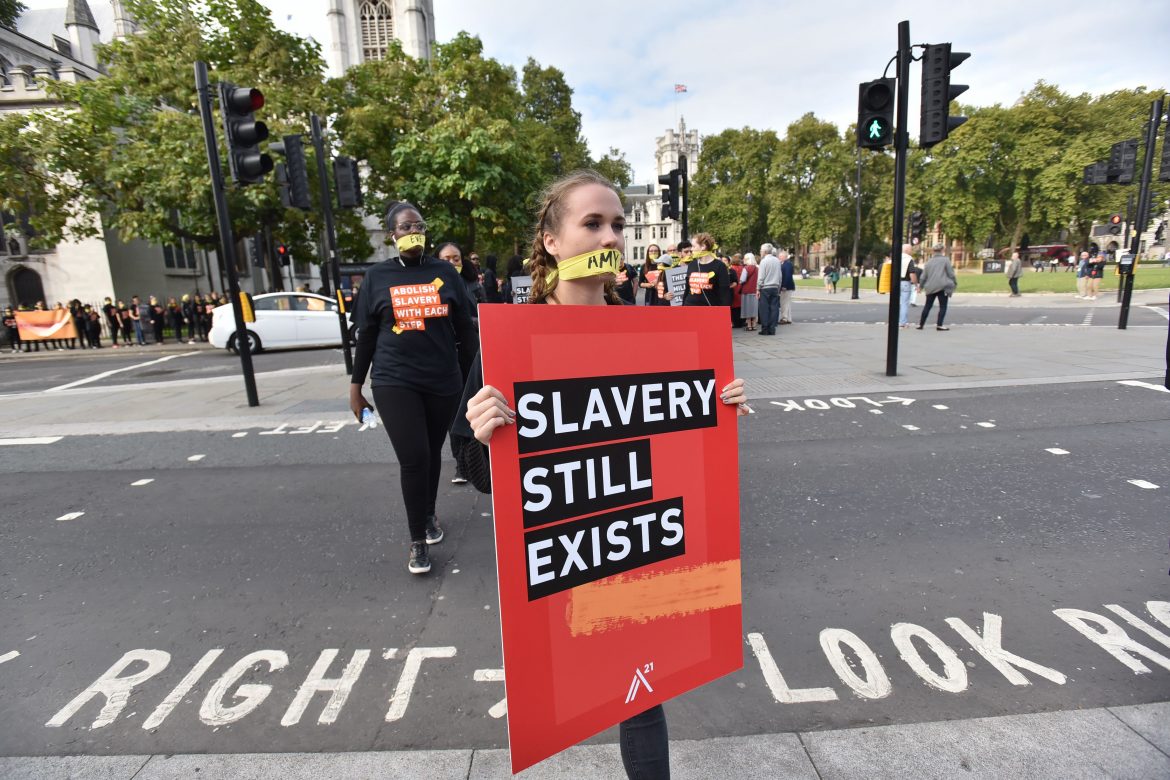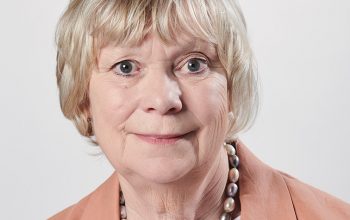Being told to stay inside, intense isolation, and severe financial instability: the trauma many of us are enduring through the Covid-19 crisis is all too familiar for people who have faced modern slavery.
As society attempts to navigate through the pandemic, victims of modern slavery have been forgotten.
The ability for the public to spot the signs of people who have been exploited for forced labour, domestic servitude and sexual exploitation has been hampered significantly as people remain at home and outside of their usual routines.
Covid-19 is leaving victims more hidden and vulnerable than ever before.
Charities are worried. Last week, The Salvation Army reported that it had recorded a fall in the number of referrals to its service during the lockdown, stating that “record numbers of UK nationals need help to break free from slavery”.
Director of anti-trafficking and modern slavery at The Salvation Army, Kathy Betteridge, says: “The reduction in the number of referrals to The Salvation Army during the first three months of lockdown greatly concerns us.
“This suggests people who might have been identified have become even more hidden. We believe many are still in the living nightmare of slavery without knowing how to get help.”
Government statistics indicate a 23 per cent decrease in potential victims referred to the National Referral Mechanism (NRM), the UK’s process for identifying victims of slavery, from April to June this year compared to January to March. This was also a five per cent decrease on the same period in 2019.
This decrease does not suggest a decline in the number of victims of modern slavery in the UK. Regardless of the pandemic, the exploitation of vulnerable individuals for financial gain continues.
Modern slavery doesn’t stop during a pandemic
Charity Hestia, the leading provider of modern slavery support in London, published a report in July that says lockdown restrictions would not stop traffickers.
“We know that traffickers are brutal and determined to get victims across borders as well as enslaving victims living in Britain. The decrease in global air travel will not deter them,” it says.
Charity Unseen runs the UK’s Modern Slavery and Exploitation Helpline. Between April and June 2019, the helpline was contacted by phone and online 2,268 times, the highest since the line opened in 2016.
This year, between April and June, the number of people contacting the helpline dipped by almost 25 per cent.
Justine Currell, director at Unseen, suggests that while the helpline received fewer calls regarding public-facing venues such as nail bars and car washes, there were more reports concerning the agriculture and construction industries.
“The pandemic might have suppressed or shifted exploitation to an extent but it certainly has not stopped it as exploiters seek to make a profit from wherever and whoever they can,” Currell says.
The trauma of exploitation itself, compounded by the effects of the pandemic, is likely to be detrimental to survivors.
She adds: “The after-effects of a controlling and exploitative situation on a person’s mental health can be lifelong and the periods of isolation and feelings of helplessness throughout the pandemic will only seek to exacerbate them.”
Far more victims than government data suggests
The Global Slavery Index indicated in 2018 that there are more than 136,000 people living in modern slavery in the UK.
Last year, however, just 10,627 potential victims of modern slavery were referred into the NRM, suggesting that an alarming number of victims remained invisible even before the pandemic.
It is perhaps not surprising then that less than a third of Londoners think modern slavery is happening in their local community, according to YouGov data commissioned by London Councils last year. Little understanding of the scale of the issue and what it entails could be keeping it in the shadows.
The reality is that modern slavery is happening close to home in every borough and every postcode.
In London, this is particularly true. Analysis of Home Office data from 2018 by London Assembly reveals that more than 30 per cent of modern slavery cases were in the capital, almost three times that of any other region in the UK.
In 2018, the Metropolitan Police Service recorded at least two victims of modern slavery in every single borough (numbers vary by borough – in Westminster, it was as high as 303 victims by October that year).
Anti-Slavery Day: what role do we all play in ending modern slavery?
Last Sunday, October 18, marked Anti-Slavery Day, a day for raising the profile of modern slavery and galvanising the public into taking action.
With economic turbulence set for the coming months or longer, organisations like Hestia warn that exploiters are gearing up to take advantage of those who are vulnerable and destitute. Charities think increased awareness is especially important during this time.
Appealing to the public, Betteridge says: “Further lockdown restrictions mean we are spending more time at home and there are fewer physical interactions for suspicions to be raised.
“When the public do leave their homes, we need them to know how to spot the signs of slavery, how to report it and spread awareness.”
A holistic approach is vital
Leading professionals and organisations in the sector believe a holistic approach is vital in ending this crime.
Currell says: “Collaboration across organisations, understanding the agility of exploiters and knowing that exploitation is about supply and demand are key if we are to ever eradicate modern slavery.”
Businesses can rigorously examine their supply chains to ensure they are slavery-free, for example.
The Human Trafficking Foundation and Anti-Slavery London Working Group have created protocol and guidance for local authorities in identifying and supporting victims, including the recommendation that local authorities should be providing training to frontline staff to raise awareness.
Kingston Council has set up its own Modern Slavery Working group, which “identifies what is currently being offered to support victims of modern slavery, ensuring all professionals are aware of referral pathways and to bring in external experts to assist in strengthening the partnership and the services available for victims”.
Religious organisations can make a difference too; the Clewer Initiative, for example, helps enable the Church of England and wider church networks to detect and weed out modern slavery in communities.
The role of the general public is arguably most vital, as the eyes and ears helping to recognise and report concerns about potential victims of modern slavery.
The Clewer Initiative lists some signs to be aware of during Covid-19, and charity Unseen has an extensive list of things to keep an eye out for in all scenarios, including signs of physical abuse and overcrowded or dirty accommodation.
The UK’s Independent anti-slavery commissioner Dame Sara Thornton, writing in Hestia’s report earlier this year, says: “During post-Covid recovery, it is now more important than ever for us to take a partnership approach to respond to modern slavery and human trafficking.”
While the general public stays at home, modern slavery is still happening on the streets. Taking collective responsibility and individual actions, through Covid-19 and beyond, is the only way it can end.





